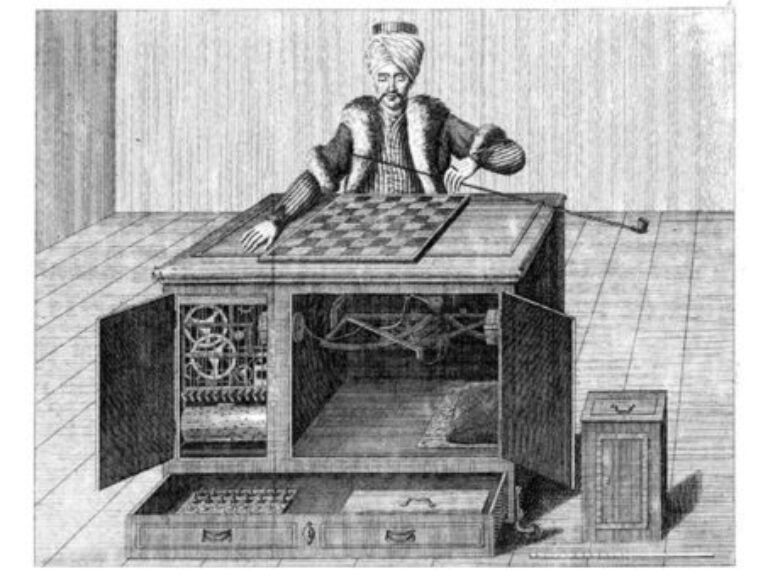
Peeking into the Box
In this Normal Deviance Column, Hugh takes a quick history tour through overhyped artificial intelligence claims and the implications for gauging the value of modern tools.
In 1770 in Vienna, the capital of the mighty Habsburg Empire, a new curiosity was unveiled. Sitting behind a large box was the head and torso of a mannequin, dressed in Ottoman robes and a turban. On top of the box was a chessboard and pieces.
The machine was unveiled by Wolfgang von Kempelen, a Hungarian author and inventor. With doors that apparently let observers see all the complex clockwork mechanics within the box, it was billed as a fabulous new chess-playing automaton.
Count Ludwig von Cobenzl was the first to play the machine and was quickly defeated. Others likewise were defeated by the machine’s aggressive play style. This spawned curiosity and publicity.
While Kempelen was reluctant to display the “Mechanical Turk” regularly, demand meant that it would periodically be demonstrated and go on tour. Over the next 80 years (long after Kempelen’s death in 1804) the machine won hundreds of matches, including against historical figures such as Napoleon and Benjamin Franklin. It continued to tour, and from 1826 onwards was exhibited in North America until the 1830s.

It was, of course, a very elaborate hoax that was finally exposed in 1834. The secret? The box hid an expert chess player, who could operate the Turk as a puppet to play the game. A sliding seat allowed the person to move out of the way as different doors were opened. Magnets underneath the chess board moved up and down as pieces were played, allowing the person inside the box to see their opponent’s moves.
The modern day “Mechanical Turk”
Then in 2016, Bloomberg exposed x.AI (among others), a tech startup that aimed to simplify calendaring. Users could forward messages, and the program would interpret and action calendar events, and send related emails. The chat interface allowed users to talk to the bot in natural language to manage the calendars.
As it turned out, a very high percentage of interactions were handled by humans, often working punishing hours. And moreover, it meant that humans were reading the emails and calendars of paying customers in ways they did not always understand.
Why the history lesson? While past demonstrations like the Mechanical Turk fooled audiences into believing in artificial intelligence, echoes of similar illusions persist in the modern AI landscape.
We live in a world with a torrent of new AI-related claims. While many are legitimate (there is not a poor exhausted human typing out answers at the backend of ChatGPT!), we will still need to sift through claims that are overhyped. This hype may stem from exaggerating the tool’s intelligence or the extent of human labour it can replace.
Whether it’s evidence that public servants do not become much more efficient using AI tools, or AI news alerts mangling headlines, or robot demonstration events having robots that are remote-controlled by humans, it’s clear that there will be unevenness in how effective applications are as they are rolled out.
For potential users, I think this means:
- Keeping track of AI developments to understand what is plausible and what is overreach with current technology
- Developing good ways to validate the performance of a tool, so its limitations can be clearly understood.
And we should keep an eye on the human toil involved in our technological development. Even modern tools rely on datasets and tuning processes with a large human effort.
As the New York Magazine notes, “…behind even the most impressive AI system are people — huge numbers of people labelling data to train it and clarifying data when it gets confused.” Ironically, sometimes people have to do the mundane legwork that enables machines to do it for us.
The Mechanical Turk was destroyed in a museum fire in 1854. x.AI (to be clear, a different company to Elon Musk’s latest AI effort) largely shuttered in 2021. Many AI claims today will not survive the test of time. However, by playing our cards (or our chess pieces) right, we will be able to avoid being carried away by the hype.
CPD: Actuaries Institute Members can claim two CPD points for every hour of reading articles on Actuaries Digital.






